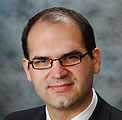Coating Matters | TWOSD
- Published: August 20, 2013, By Mark Miller
If you'd like to hear from Mark Miller's own lips rather than read his column titled, "Coating Matters | TWOSD," click on his podcast below:
{mp3}coating-matters-twosd{/mp3}
What?!? Don’t you love acronyms? I personally get along with TLAs (three-letter acronyms), but FLAs? It is a bit much. TWOSD, or Tensioned Web Over Slot Die, is a coating technique that has some unique advantages.
The concept behind TWOSD is that when a slot die is engaged with a precision backing roll you have a metal roll and a metal slot die that are within microns of each othe r. The thinner you want to coat, the closer you have to get. This is a dangerous proposition for two expensive pieces of equipment.
r. The thinner you want to coat, the closer you have to get. This is a dangerous proposition for two expensive pieces of equipment.
One option is to eliminate the roll and have the web run over the slot die instead. But how does this work? The convex nature of the web is reversed, and the web wraps around the slot die lip geometry instead, creating a concave structure for the fluid flow.
Now the roll and slot die no longer specify the gap of the flow geometry with that pesky web caught in-between. Instead the hydrodynamic force of the fluid set the gap between the web and the slot die. Ingenious! This web and slot die interaction without the roll geometry has a special name—elastohydrodynamic action.
In the high speed, thin coating applications that benefit from TWOSD, the hydrodynamic lift force balances the tension of the web to keep the slot die from touching the web. This process can be simulated and the important parameters are: web tension, line speed/flow rate, wet coating thickness, wrap angles, lip geometry and resultant web penetration.
The resultant pressures experienced by the fluid outside the slot die are different (higher) than typical slot die roll coating applications. These higher pressures can help smooth the coating, or in some cases, penetrate into the substrate. This penetration coating can be a desired effect for some saturated products that want to have fluid coating throughout a porous substrate.
You can’t avoid all coating defects however. If the tension, geometry, or pressures are not within the coating window similar defects can occur to slot die roll coating. The mathematical computation of the defects is simply different than determining the ribbing over overspill defects associated with the standard geometry.
So how do you control the wrap angle, tension, and overall coating capability of TWOSD? Physically the slot die is positioned between two idler rolls and the web serpentines between the lower roll, the slot die, and then the upper roll. The spacing of these rolls, both vertically and horizontally, are important to the resultant tension, pressure, and elastohydrodynamic action.
If you are stuck with a specific idler placement, then turn to the external lip geometry of the slot die to control the resultant pressures and coating window. The more radius that is created, the more flexibility is provided. Be careful! While your coating window opens up with increased lip curvature, to coat thinner, a smaller curvature is required.
It is always good to have extra tools in your tool box. So when you are coating with slot die and your management is asking to squeeze more dollars out of a product by making the fluid coating thinner, consider TWOSD as a viable option. Happy coating!
 Mark D. Miller, author of PFFC's Coating Matters column, is a fluid coating expert with experience and knowledge in the converting industry accumulated since 1996. Mark holds a Bachelor's degree in Chemical Engineering from the Univ. of Wisconsin-Madison and a Master's degree in Polymer Science & Engineering from Lehigh Univ. and a Juris Doctor from Hamline Univ. Mark is a technical consultant and CEO of Coating Tech Service LLC. He has worked in web coating technologies and chemical manufacturing operations and is a certified Six Sigma Black Belt trained in both DMAIC and DFSS disciplines. Coating Tech Service provides process troubleshooting and project management for precision coated products. Mark has extensive process knowledge in high precision coating applications including thin film photo voltaic, Li-Ion battery, and optical systems technology. Mark has been integral to new developments and technology that minimize product waste and improve process scalability.
Mark D. Miller, author of PFFC's Coating Matters column, is a fluid coating expert with experience and knowledge in the converting industry accumulated since 1996. Mark holds a Bachelor's degree in Chemical Engineering from the Univ. of Wisconsin-Madison and a Master's degree in Polymer Science & Engineering from Lehigh Univ. and a Juris Doctor from Hamline Univ. Mark is a technical consultant and CEO of Coating Tech Service LLC. He has worked in web coating technologies and chemical manufacturing operations and is a certified Six Sigma Black Belt trained in both DMAIC and DFSS disciplines. Coating Tech Service provides process troubleshooting and project management for precision coated products. Mark has extensive process knowledge in high precision coating applications including thin film photo voltaic, Li-Ion battery, and optical systems technology. Mark has been integral to new developments and technology that minimize product waste and improve process scalability.




